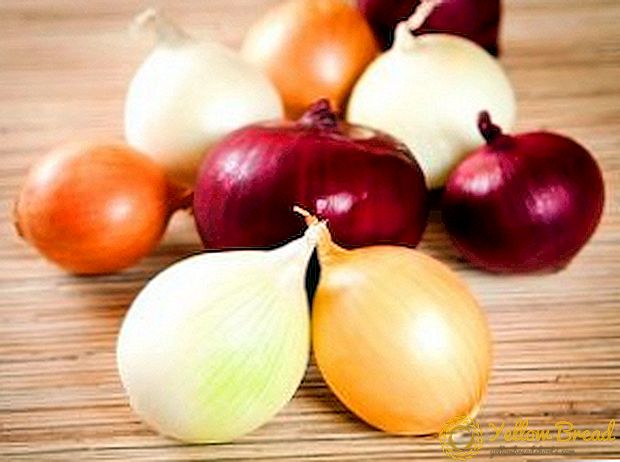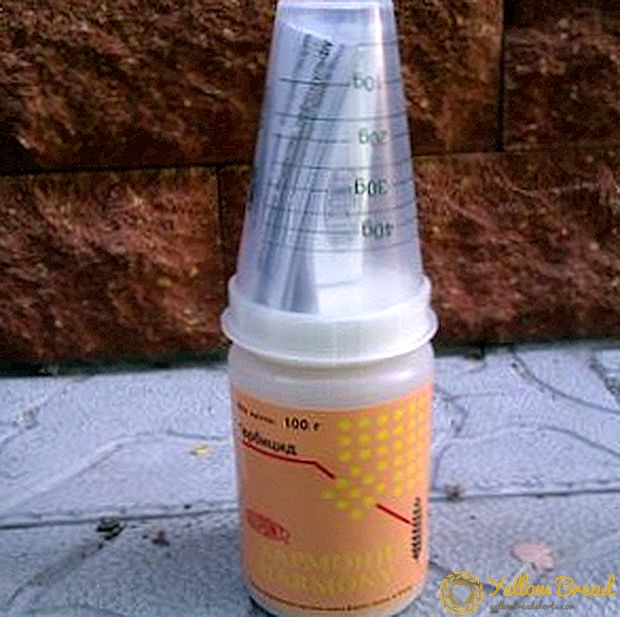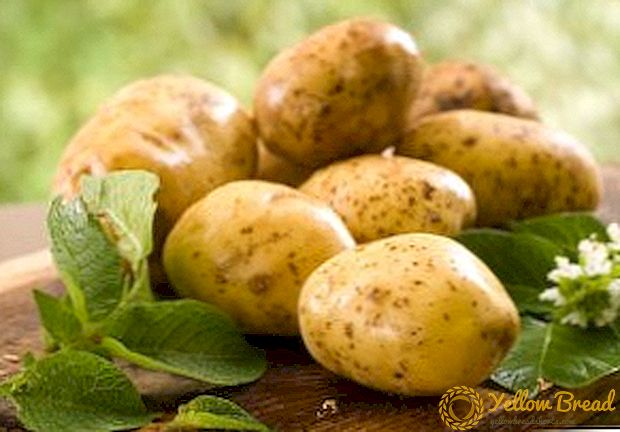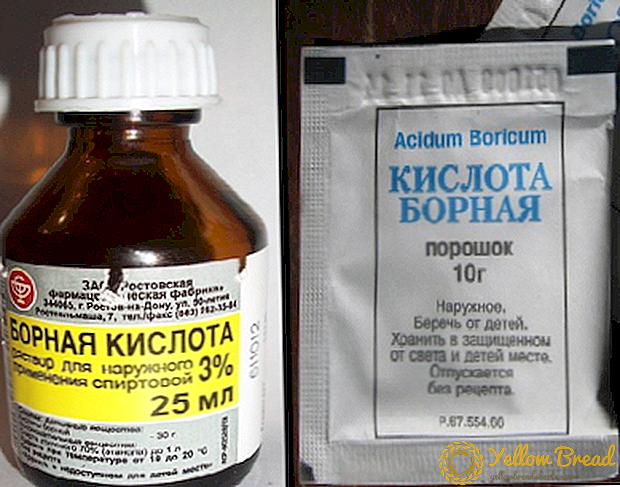
Growing and breeding chickens is not only a fairly simple task, but also quite profitable.
Moreover, having only once bought chickens on the market, you will no longer need to spend money to get a new generation of poultry.
After all, indeed, why extra trouble, if the majority of poultry is well developed instinct of incubation and care for their children.
The article below will be fully devoted to the features of the natural incubation of eggs or, in other words, their incubation.
We will talk in detail about how, when and in what quantities to lay eggs under the hen in order to get beautiful young birds.
How to identify a bird that is ready to hatch eggs: the main signs of a hen
Using a hen to hatch eggs has many advantages over a conventional incubator.
Of course, with the help of this device you will be able to get a large number of young stock in a very short period of time, but only then one question becomes obvious: how to keep them further and how to look after them?
For a person, looking after small chickens or turkeys is a very troublesome business, while the hen will cope with this very simply and with pleasure.
Among the breeds of chickens, geese, turkeys, and other types of poultry that are most common on domestic farms, the instinct to hatch eggs is manifested in most females.
The problem with chickens arises only when the birds are kept in large farms and chicken farms, where they are limited in the area for walking.
To understand that a bird is ready to hatch, you can directly by its behavior:

- A hen that has a brooding instinct begins to groan unusually.
- It can linger very long in the nest, from which it will even have to be driven to pick up the eggs.
- Externally, it can become a bit scruffy, as it begins to pull feathers out of itself in order to make them nest.
- The size of the comb and earrings are reduced.
- The egg-laying of the future hen chickens stops completely.
Having noticed such a kuru among your pets, you should not hurry and immediately plant it on the maximum number of eggs. After all, need a bird with a calm characterso that at half the allotted time has not left the nest. Therefore, it is worth checking right away how her “intentions” are: for 2-3 days they put dummy eggs under the chicken.
If after 2 days she left the nest and stopped quagging, there will be no hen out of it. If you stayed in the old place and didn’t even get up - you can safely put incubator eggs under it.
What if all the chickens, no one shows a desire to hatch eggs?
This, in fact, also happens quite often. But you should not be upset. It is possible to develop the incubation instinct independently. To do this, choose the most well-fed layer (after all, during the incubation period the bird loses a sixth of its previous weight) and the most appeasable in temperament.
It should be caught and, in fact, forcibly seated on bogus eggs, covering the top with a basket. If it does not fly off the nest, when after a few days you lift the basket, then you can lay real eggs under it.
But do not forget about the following points:

- To incubate take only healthy birds. Even if mites or some other parasites are found on the chicken's body, it should be treated anyway, providing gold baths and treatment with special preparations.
- Before incubation, you should try to feed the chicken as best you can.
- It is better to plant a bird on eggs late in the evening, or even at night, in order not to cause anxiety.
If you have too many chicks, then in order to suppress such an instinct in a bird, you need to soak it in water and close it in a cool and dark room. Release it only twice a day for feeding. After repeating such a procedure several times in a row, the chicken will usually stop crying.
Characteristics and requirements for incubation eggs
It is impossible to put any available eggs under the chicken, as they may not all be fertilized. Also, can not use those eggs that were stored in the refrigerator, or transferred other temperature drops.
In general, pay attention to:
- In the flock of chickens there was a correct ratio of roosters and females. For example, for egg and meat breeds, one rooster is enough for a flock of chickens among 10-12 individuals.
- Eggs were taken from a healthy chicken, which has already reached puberty (in these birds, this period begins at 7 months).
- For incubation, very fresh eggs were used, which were demolished by chicken no later than 6 days ago.
- Eggs before incubation were stored at a temperature of 15-20ºС, at a humidity of 75%.
- Contaminated and broken eggs were not used.
- Medium-sized eggs were placed under the chicken, since small embryos are usually found in small ones, and large yolks in large ones.
- The eggs were checked through the ovoscope for the presence of various inclusions.
Cooking nest for a hen

A nest for a hen is necessary for preparing in advance In size it should be such that the eggs and chicken fit well in it, and that the eggs do not roll out of it.
Optimally - 55 to 35 centimeters.
The shape of the nest should be bowl-shaped, with turf at the base and straw that is poured on top.
It is best to make the hen such conditions so that she can freely leave the nest when she wants to eat or drink.
Nests can be used for several years in a row, always drying them before they are stored.
What is the best place to plant birds on eggs?
The place for the chicken nest should be located in a very quiet and, preferably, distant from other individuals place. The chicken should be placed in it freely, feeling calm and safe.
It is especially important to attach importance to safety if rats often enter your house. In this case hen nests are usually made suspended, or installed not directly on the floor, but on special superstructures.
If there are many chicks, then it is better not to plant them in the same room if possible. Such close proximity can cause very fierce fights for nests and for eggs. Therefore, make the distance between them maximum, it is desirable that even the hens could not hear each other.
You can at least cover them with a wicker basket, thus narrowing the horizons of hens.
We discuss the features of the best chicks: by what criteria to make a choice?

The best hens professionals include those chickens that are representatives of meat and egg breeds. Also very good incubation instinct manifests itself in purebred chickenswhich is usually kept in villages.
The last chickens usually have a mass suitable for incubation, without depleting too much during this period. Also, they make incomparable "moms" who can very well take care of their offspring.
Many also advise choosing chicks according to their genetic line, that is, selecting them according to the characteristics of the mother. If a very docile "mommy" hatched chickens, then from her brood there will also be the most docile hens.
It is noted that such hens are able to hatch eggs of any breed. For breeding chickens also often use turkeys. Their advantage is that they are able to sit through any eggs, in fact, in much larger quantities than the chicken itself.
However, in no case should not be taken those hens that were bred using an incubator. Even if out of 30 such hens at least one begins to cluck in the spring, this will be a very rare case.
Those hens that belong to the egg-bearing type are also bad at incubation. In particular, laying eggs of Legornov or Russian past chickens is better for chicks of other breeds.
When is the best time to plant a hen on the eggs?
The incubation instinct is usually manifested in all birds of our climatic zone in spring. This is quite logical, since the young growth that appeared in springtime has time to grow well during the warm period of the year and get stronger by autumn and winter.
In particular, for such a short period of time, their down is replaced by a full-fledged plumage, which will protect the bird from the harsh winter cold.
But in the spring you need to guess the timing well, because you can plant a chicken too early. In this case, there will be a great danger of death of not strong young stock, because in the springtime there will also often be prolonged cold.
Ideal to chicken sat on eggs in the first half of April, then the chickens will appear by the beginning of warm May. Although, such definitions of time are more generalized, so you need to focus on the climatic conditions of your own region of residence.
The duration of the incubation of eggs in different types of poultry

The period of chickens incubation of eggs is the shortest, when compared with other common types of poultry. So, in chickens, this period of time usually lasts no more than 20-21 days. But in ducks and turkeys the young appear only on the 27-28 day from the moment when the bird first sat on the nest with eggs.
The geese are the longest on the nest - from 28 to 30 days. At the same time, one day before the end of the specified dates of incubation, eggs begin to peck.At this time, the egg is almost full-fledged chicken, which is tapping on the inside of the shell, trying to get out.
It is very important not to intervene in this process without such a need. The fact is that at this time the hen becomes especially disturbing, therefore, it is better not to disturb her once again. If at the very end there will be 1-2 eggs out of which the chickens did not have time to get out, then you can help them.
How many eggs can I put under one hen and on what does this number depend?
This figure will directly depend on what size the hen itself has. If the chicken is quite large, then it will be able to cover many more eggs with its body. On average, 13 to 15 eggs are laid per hen. When brooding larger eggs of other types of poultry, their number should be reduced. Consider the following:
- The number of eggs should be such that they can fit completely under the hen. If you see that one or two eggs are not capable of sheltering a hen, it is better to pick them up at all until they have deteriorated.
- The eggs under the chicken should be laid in one layer.
- Do not add eggs to the nest during the incubation process.The fact is that immediately after the appearance of the first chickens, the chicken will leave the nest, and these eggs will simply be transferred in vain.
Caring for the bird and its nest while hatching eggs

The first thing you need to take care of when hatching eggs is its feeding. Some hens can be so stubborn that they will refuse to leave the nest during the entire incubation period. Therefore, it must either be specially rounded so that she eats, or put food and water in front of the bird's nest.
However, with water you need to be especially careful and make sure that the birds do not overturn the vessel with it and do not flood their nest. Although it is important for the waterfowl near the nest to put a vessel with water in which they can swim a little.
The feed also has its own special requirements: it should not be wet, because in this form it can cause intestinal disorders in the hen.
The first 2-3 days the bird will not get up from the eggs at all, so it must be removed from the nest and brought to the trough with food and drinker. Sometimes, after feeding the chicken can continue to walk, so it needs to be caught back and seated on the eggs.
In the future, it is considered the norm, if a bird rises from a nest 2-8 times to eat, while leaving its eggs only for 10-15 minutes.
While there is no chicken on the nest, you can inspect the eggs and the nest, fix the litter, replace it with a dry one (if you need one).
Highly It is important to check the eggs on time.to determine if there are no unfertilized among them who will be bright. If it was fertilized, then already during this period you will see an embryo inside it in the form of a dark spot and signs of a future circulatory system.
It also happens that the development of the embryo for one reason or another stops. In this case, inside the egg, you will see a blood ring or a single gyrus.
Once again, it is worth exploring eggs under hatching, in chickens it is the 19th day, in ducks and turkeys - the 26th day, and in geese - 27-28th mine. It is important to remove from the nest those eggs in which there are frozen embryos that will be viewed simply as a dark mass without blood vessels.
Features of the appearance of the young

As we have already mentioned, in the light, chickens begin to make their way already at 19-21 days. They hatch from the eggs are wet, but after sitting under the chicken for several hours they dry completely.
But already dry, it is recommended to take them away from the hen for some time and place them in a box with a soft, pre-covered fabric, bottom. At the same time, they should be kept in the usual temperature from 26 to 28ºС.
Such a measure is taken to ensure that the chicken sat on the remaining eggs. After all, the hen has such a feature - to leave the nest immediately after the birth of several chicks. It is possible to run all the chicks under the hen only after the chick emerges from the last egg remaining under it.
Important feature that to one hen you can sit down and other chickens, in particular, hatched with an incubator.
If you let them go to the chicken with her own young, and do it in the late evening while feeding, she won’t understand anything. However, overdoing with the number of chickens is not worth it, since one hen is most capable of driving 25 individuals.
In the care of the exhausted chickens and their young, the following is important:
- The chicken must be fed very well, relying not on a large amount of food, but on its nutritional value for the bird. It is especially important to combine in the diet of hen grains and greens.
- Feeding the chickens begins with a crumpled egg, to which fermented milk products, boiled cereals are gradually given, after which it is already possible to switch to dry millet.
- It is very important for both chicken and young to drink plenty of clean and fresh water, which is your first priority to ensure. Consider that an adult hen and little chickens will need different drinkers.
- It is important to constantly release the youngsters for walks, but there must be a place in the pen where the hen could hide with the young from the weather. It is also necessary to take measures to protect birds from predators.






